The “British India Steam Navigation Co.”, “S” Class Trio of 1947 & 1950
Please
Note: Firefox, iPhones, iPads & some other Search Engines
may not be suitable
Use Google Chrome
for this Web Page to load perfectly!
Click the logo above to reach the ssMaritime FrontPage for Ships of the Month & News Updates
With
Please Note: All ssmaritime as well
as my other related maritime & cruise sites are 100% non-commercial and
privately owned sites. Be assured that I am NOT associated with any shipping or
cruise companies or agencies or any other organisations! The author has been in
the passenger shipping industry since May 1960, but although retired and
unwell, I occasionally attempt to write an article now and then, in order to
bring enjoyment and pleasure to ship enthusiasts past passengers and crew.
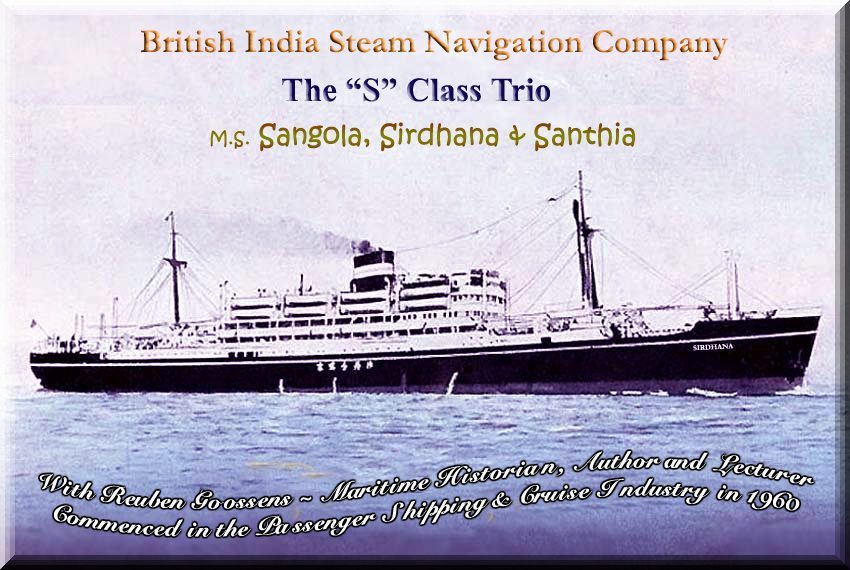
The
photograph is of the third ship of the Trio, the
This
photograph was originally a “British India Steam Navigation Co”
publicity photograph
Photographs are from the author’s private maritime 1960’s collection, unless stated otherwise
Introduction:
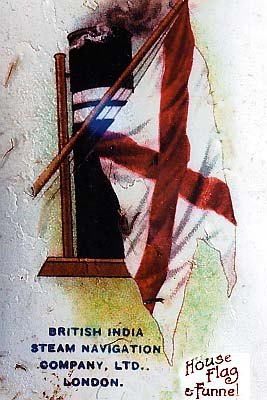
In 1886
Many of the B.I. ships carried a smaller
number of passengers, either in one class or two classes, but some also tended
to carry native passengers on deck between ports.
The “S” Class Trio
This fine “S” Class Trio of Ships had been especially constructed for British India's post-war Calcutta-Far East service, which was known as the “Apcar Route”, - which B.I. had obtained from the “Apcar” family back in 1912.
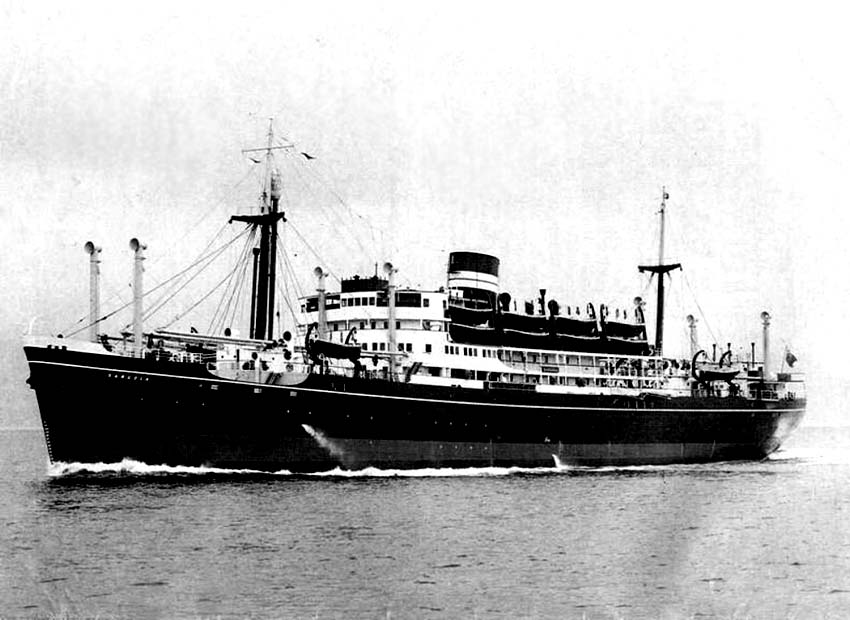
The first
of the BI “S” Trio, the
Photograph by the builder, Barclay Curle & Co
But before we delve into each ship’s details and history, let us first look at their facilities.
The Ships Facilities:
Each ship offered two classes, but originally these classes were known as “First Saloon” and “Second Saloon”. The both classes were fully ventilated as the ships were installed with the efficient “Punkah Louvre” ventilation systems
The venues shown below do cover all three ships, as there were almost identical.
First Saloon:
Located forward on Promenade Deck was a comfortable Lounge with windows
providing a good view forward, located fat aft was the Smoking Room with a Bar,
which featured, as
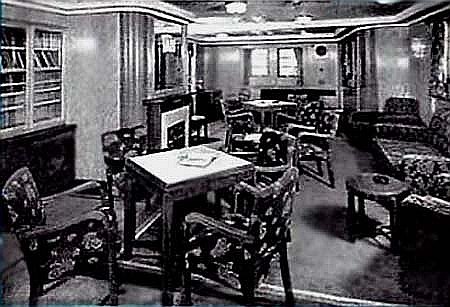
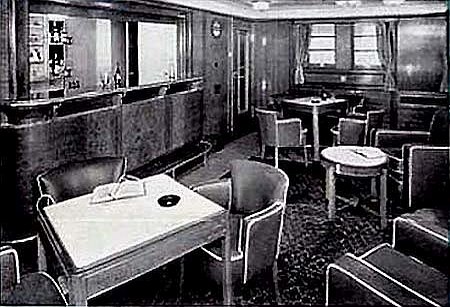
Left: The First Saloon Lounge & Right: The Smoking Room and Bar
All Photographs
are from a B.I. “S” Trio brochure, from the author’s personal
collection
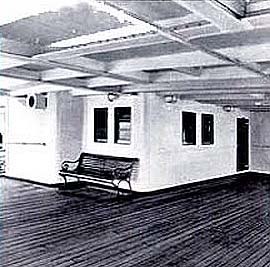
Covered
deck space
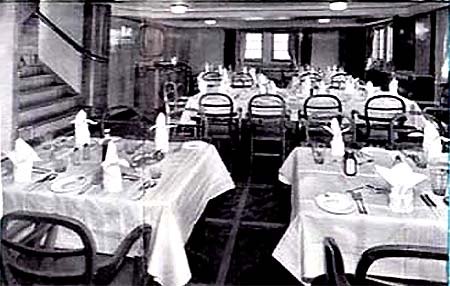
Dinning Saloon
First Saloon accommodated 21 passengers in single and two berth cabins, all having windows, comfortably furnished and with running hot and cold water.
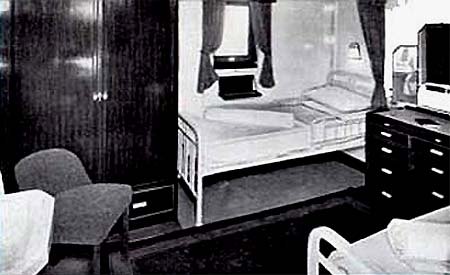
As we can see the cabin was comfortably furnished
Second Saloon: was located on Bridge and Upper Decks and had much the same style of Lounge, Smoking and Dining Room as the ones in First Saloon, but somewhat larger, with a very similar cuisine offered, but without the extra luxuries that would come in First. Here also there sufficient deck spaces. It was unusual that Second Saloon was in the main superstructure as on most ships they would be located far aft of the ship, but not aboard the “S” Trio, for the brochure did state they had a “Higher Standard of Accommodations.”
Second accommodated 70 passengers with all
cabins having three berths and having a porthole, although the
In addition to the above all three ships had been built with the Asian coastal trades in mind and they were able to take large numbers of native passengers who would be transported from port to port outside of the monsoon months as deck passengers located on the forward decks of the ship as well as some being able to obtain interior more basic accommodations in four, six or eight berth cabins with folding bunks for longer stretches.
In addition, each ship carried fully qualified doctor, who was also a surgeon as well as a nurse and a small, but fully fitted out hospital, come medical center.
Cargo:
Each Ship had four cargo holds, the
*************************
“S”
Class Ship One
M.S. Sangola
This ship was constructed by Barclay Curle
& Co., of
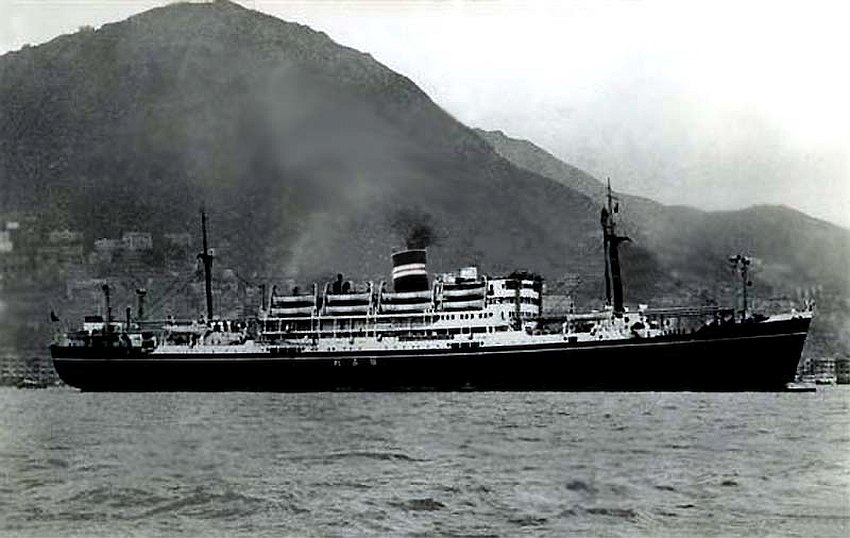
The Sangola and her two newer sisters, yet to
be delivered, would be operating on the regular
In 1948 the
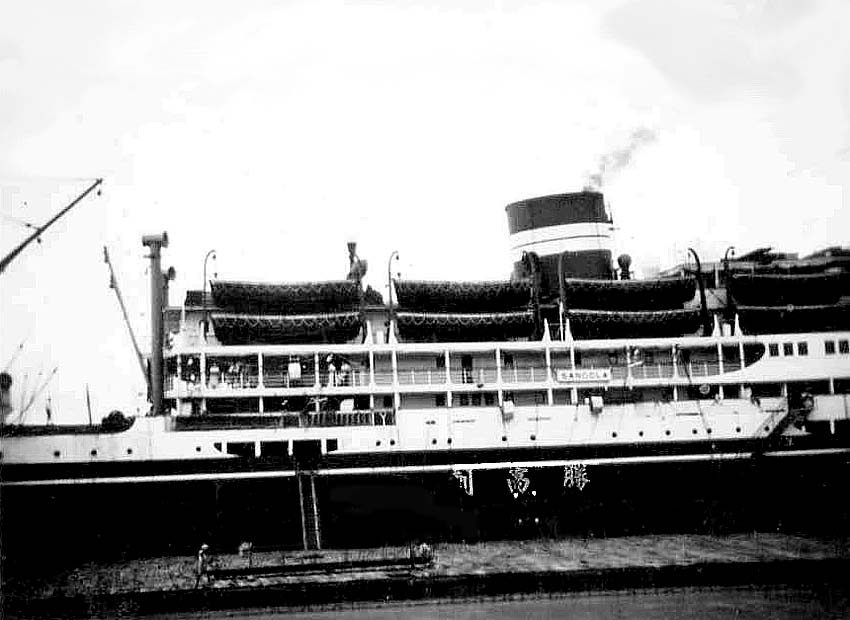
A close up of her starboard side superstructure Note the Chinese lettering on her hull, it reads San Go Lah
Photographer is unknown - Please see photo notes at the bottom of the page
The Hiraganj Sand
Early in the afternoon of July 1, 1953 the
Sangola, having just departed
As the ship's position became more precarious
throughout the day, these men were enlisted by the Sangola's Master to help to
control and to evacuate the civilian passengers, a feat that was accomplished
without loss during the evening of July 1, and the early morning hours of July
2. For the next 6 days the Sangola was at the mercy of tides and currents of
the river, forces that threatened to further damage the ship, but sadly she
still partially sunk.
Return to a New Service:
Upon completion in December 1954, the
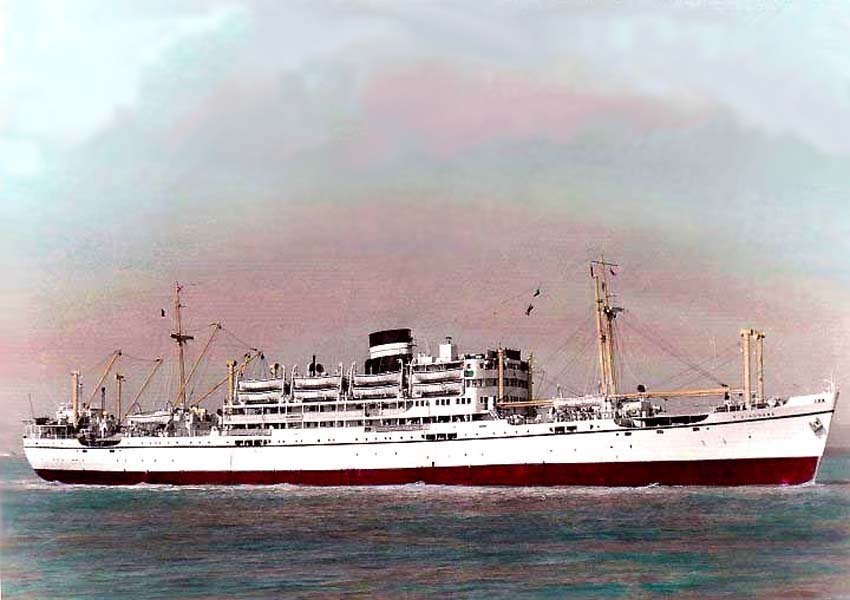
An
excellent portside view of the all white
Early in 1962 The Sangola was
transferred to the
From Bombay to Karachi, Parsni, Gwadar (Pakistan), Muscat (Oman), Bunder Abbas (Persia or today’s Iran), Sharjah, Dubai (UAE), Umm Said (Qatar), Manama (Bahrain), Bushire (Persia), Shuwaikh (Kuwait), Abadan, Khorramshahr, Basrah (Persia) back to Bombay.
The End of the M.S. Sangola
Early in 1963 it became obvious to B.I. that their hard working ships, which were built for what was becoming a dying trade, at a time when technological advance was proceeding all too quickly with new ships arriving on the scene with container facilities, being new idea, and superior cargo transferring facilities. Thus it was it was decided to sell the Sangola.
It was on March 26, 1963,
For interest: In 1965, M.S. Sangola’s
*************************
“S”
Class Ship Two
M.S. Sirdhana
The second “S” Class ship of the
series was constructed by Swan Hunter & Wigham Richardson at
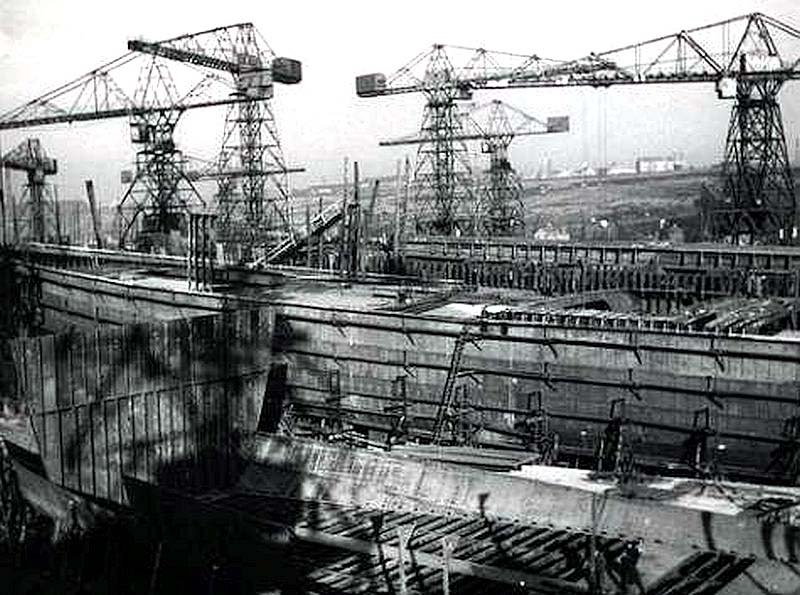
The second of the ‘S’ Class Trio ships is seen in construction
The 8,608 GRT Sirdhana was delivered to B.I.
in December 1947, and she also cost
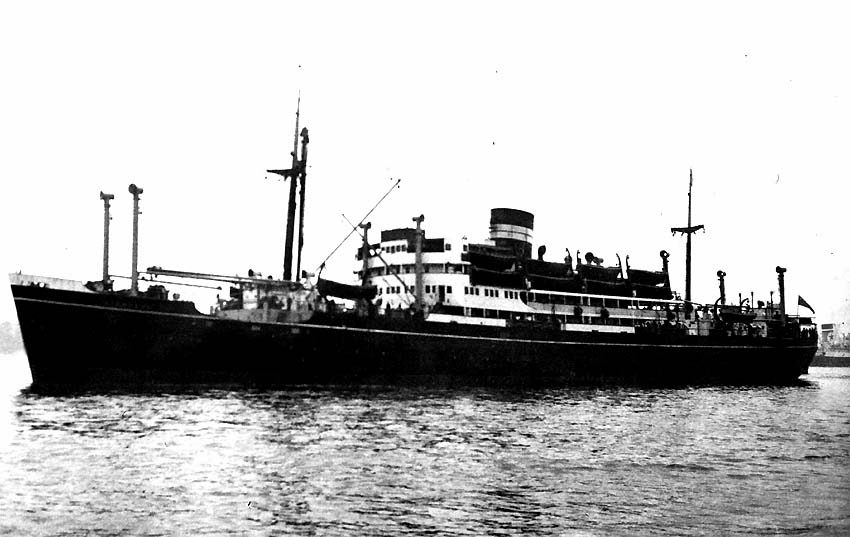
Above
& below:
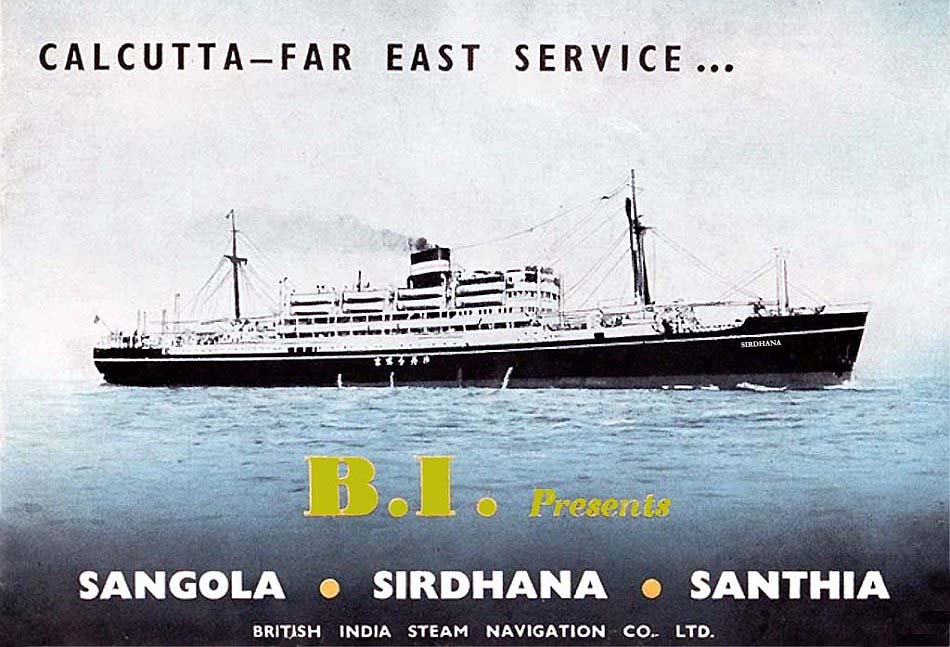
She continued on this service without much ado until 1955 when she received a refit and was painted all white, which also saw the Chinese characters removed from the sides of her hull. On board changes was most hat she now accommodated 21 in First Class, 32 in Second Class, 30 in Intermediate Class as well as 333 in folding bunks and 987 deck passengers.
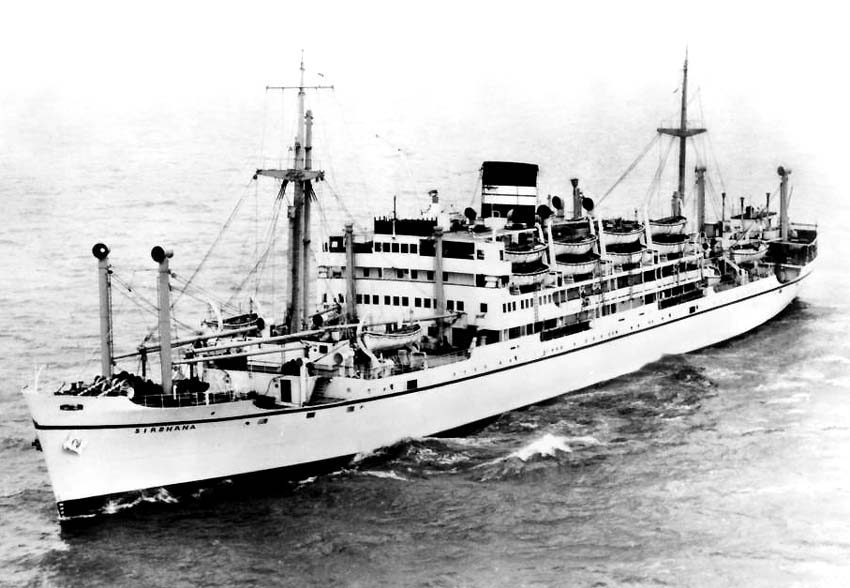
She returned to service when she was completed
looking like a gleaming new ship and she sailed on her regular service for the
next five years until a massive incident took place in Yokohama, Japan!
USS General William Mitchell
In 1960 Captain
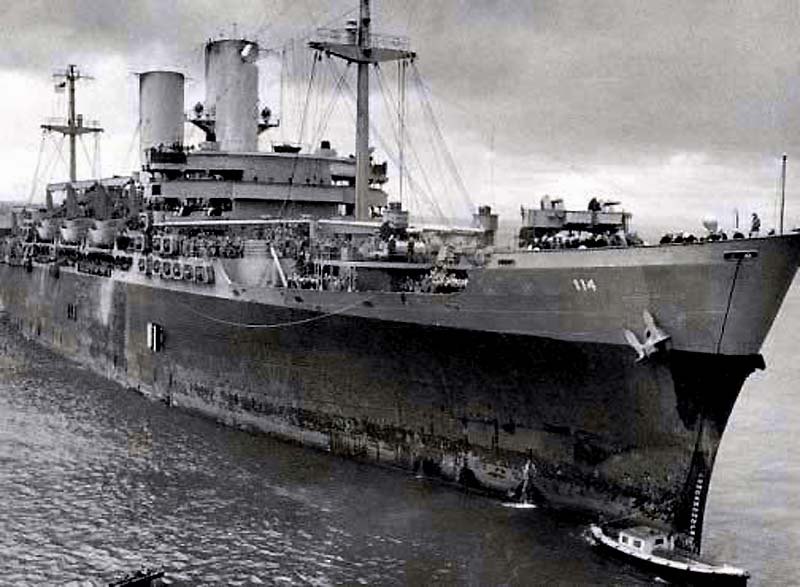
The
Sadly the
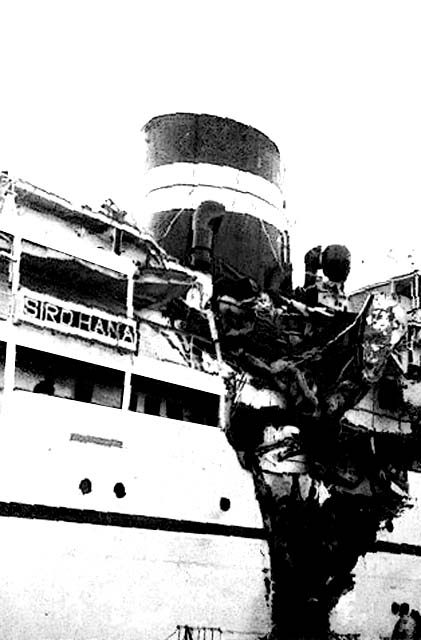
A photograph of the massive damage done to her starboard side
Photographer
is unknown - Please see photo notes at the bottom of the page
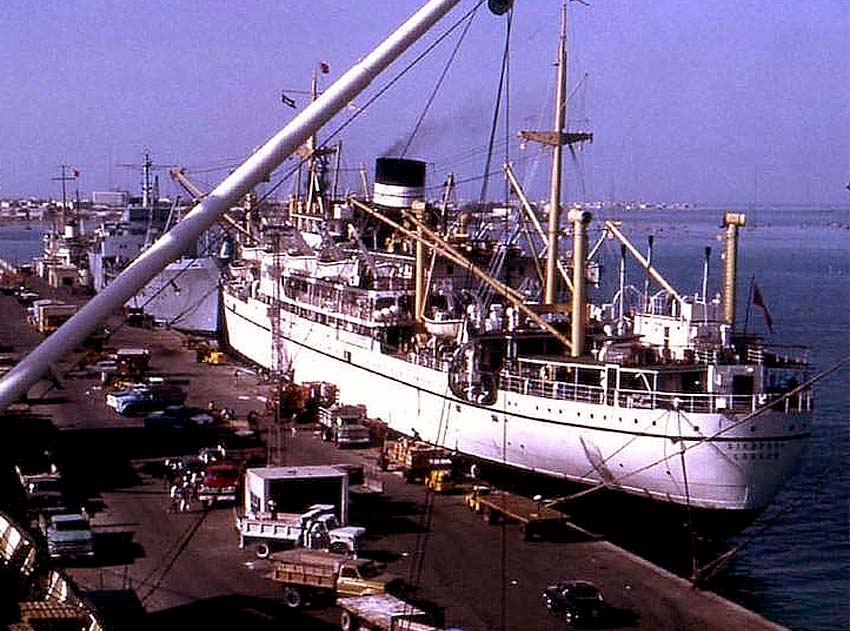
Change of Hands & her End:
In October of 1971 the Sirdhana along with
some other BI vessels, were transferred to the newly established P&O
General Cargo Division, for whom she made three East African voyages, turning round at
Dar-es-Salaam.
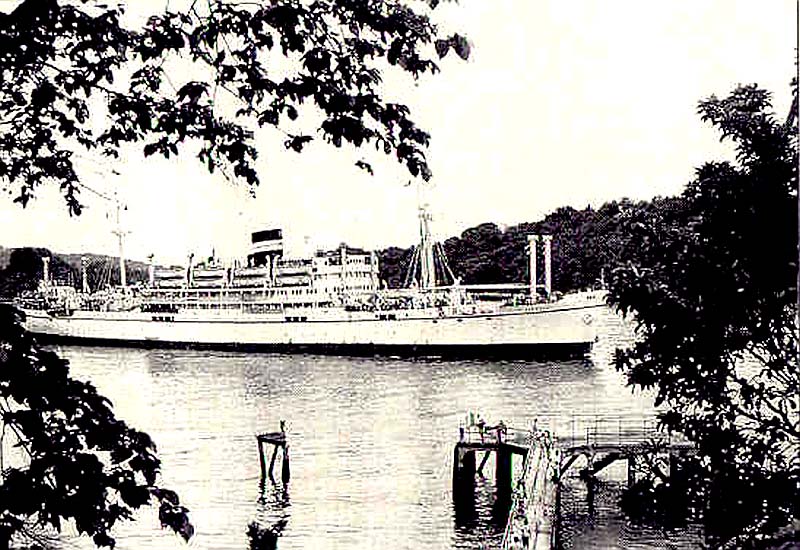
A delightful view as she slides into port
I am sorry for the poor quality of this photograph, it was badly damaged
Sadly the three BI 'S' Trio ships they did pass into history much too fast. But of the three, at least the Sirdhana managed to fulfil a good 25 years with B.I.
The Sirdhana sold on August 3, 1972, to
“Nan Feng Steel Enterprise Co Ltd” of
*************************
“S”
Class Ship Three
M.S. Santhia
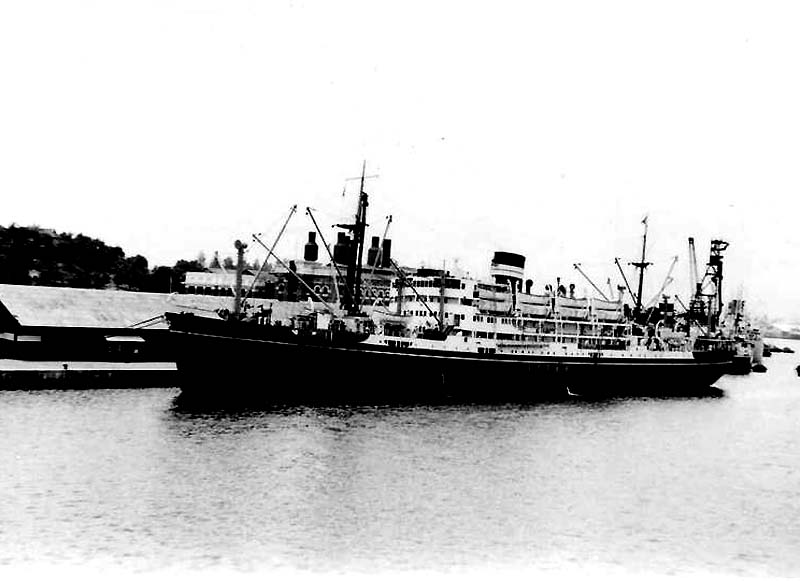
The last
of the ‘S’ Class Trio the
She was made ready for her maiden voyage and
she joined her sisters on the
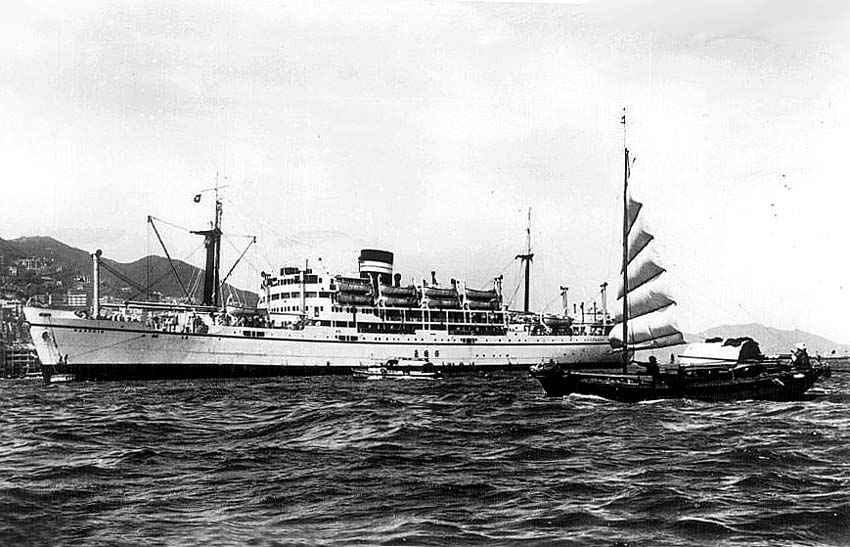
The all
white
She continued the Far East service until 1962,
when she was also was placed on the
On a voyage from Basrah to

The Santhia towards the end of her B.I. career!
The

M.S. State of Haryana seen in a port
Thank
you
The former British B.I. ship thankfully had
found a new life, as she would continue to serve a good further 10 years of trading
between
M.S. Santhia Haryana
Last
Suddenly late in November 1976 she suffered a major collapse of her auxiliary boilers and they could either be repaired or be replaced. The only option was to sell the now 26 year old ship to the breakers.
On January 2, 1977, she was sold to “Zain
& Co.,” of
*************************
1.
Sangola. 2. Sirdhana. 3. Santhia:
Built
by: 1.
Barclay Curle & Co., of
. 3.
Barclay Curle & Co., of
. 2.
1826.
. 3.
717.
Launched: 1. January 8, 1947.
. 2. January 8, 1947.
. 3. June 1, 1950.
Delivered: 1. June 6, 1947.
. 2. December 9, 1947.
. 3.
November 3, 1950.
. 2. 181791 - GCLD.
. 3. 184299 - GFSN.
Tonnage:
1. 8,646
GRT, 8,046 DW, 5,053 NET.
. 2. 8,608 GRT, 8,827 DW, 5.057 NET
. 3. 8,908 GRT, 8,590 DW, 5,089 NET.
Length: 145.90 m - 478.7 ft.
Breadth: 19.11 m - 62.7 ft.
Draught:
8.046 m - 26.4 ft.
Engines: 1 & 3. 2 x 4-cylinder 2 SCSA Doxford diesel engines (by builder).
. 2.
2 x 4-Cyl as above, etc,(by Swan
Power: 5,900 BHP.
Propulsion: Twin Screw.
Speed: 14 Knots
service speed, 15.38 knots maximum.

Drawing of a B.I. “S” Class Trio Ship
Drawing
by & © Duncan Hawes
*************************
“Blue Water Liners sailing to the
distant shores.
I watched them come, I watched them go and I watched them die.”
Where you will discover over 1,270 Classic Passenger Liners & Passenger-Cargo ships!
ssMaritime.com & ssMaritime.net
The
Author has been in Passenger Shipping & the Cruise Industry for a good 60
years!
Also visit the …
Please Note: ssmaritime and associated sites are 100% non-commercial
and the author seeks no funding or favours of any shape or form, never have and
never will!
Photographs on
ssmaritime and associate pages are by the author or from the author’s private collection.
In addition there are some images that have been provided by Shipping Companies
and private photographers or collectors. Credit is given to all contributors.
However, there are some photographs provided to me without details regarding
the photographer/owner concerned. I hereby invite if owners of these images
would be so kind to make them-selves known to me (my email address may be found
on www.ssmaritime.com only), in order that due credit may be
given.
This notice
covers all pages, although, and
I have done my best to ensure that all photographs are duly credited and that
this notice is displaced on each page, that is, when a page is updated!
ssMaritime
is owned & © Copyright by
